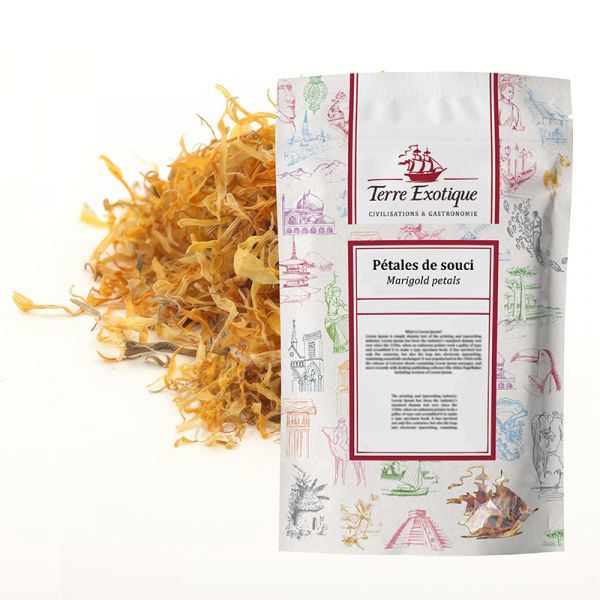



How to Cook with Marigold Flowers
The peppery and slightly bitter flavors of marigold petals pair wonderfully with a variety of dishes. Use them to enhance grilled meats, fish, or marinades. They also add a surprising note when sprinkled on vegetable tarts, soups, or omelets.
Recipe Ideas for Using Marigold Flowers
- Flavored Grills: Add marigold petals to your marinades for intensely flavored grilled dishes;
- Colorful Soup: Incorporate marigold petals into soups for a touch of color and flavor;
- Elegant Omelet: Sprinkle marigold petals on an omelet for a refined breakfast;
- Vegetable Tart: Use marigold petals to enhance both the presentation and taste of your vegetable tarts;
- Vegetable Tagine: Add marigold petals during cooking to enrich your tagine with new flavors.
A Bouquet of Flavors with Marigold Petals
Marigold petals exude a subtle, slightly spicy fragrance with herbal and earthy notes. This delicate scent comes from the essential oils present in the petals. In cooking, marigold petals are sometimes used as a spice or natural coloring, adding a mild peppery and bitter flavor to dishes.
The Secrets of Marigold
Marigold, or Calendula, is a plant with golden petals that follow the sun, opening at dawn. Contrary to its name, it doesn't evoke worries but rather the warmth and light of the sun. Marigold is an annual plant that grows easily in well-drained soil and full sun.
The secrets of worry
Marigold, or Calendula, is a plant with golden petals that follow the sun, opening at dawn. Contrary to what its name might suggest, it does not evoke worries, but rather the light and warmth of the sun. Marigold is an annual plant that grows easily in well-drained soil and full sun.
| Price/kg | 95 |
|---|---|
| Allergen | Absence |
| Native country | UE / NON UE |
| Genus and botanical species | Calendula officinalis |
| Ingredients | marigold petals |
| Contenance | 100g |
| TRACES EVENTUELLES D'ALLERGÈNES | céleri, sésame, moutarde, fruits à coques. |
 Français
Français 
